Which metals are found in a typical food can? XRF test results for the inside of a metal can from Native Forest 100% Organic Pineapple Slices in Organic Pineapple Juice.
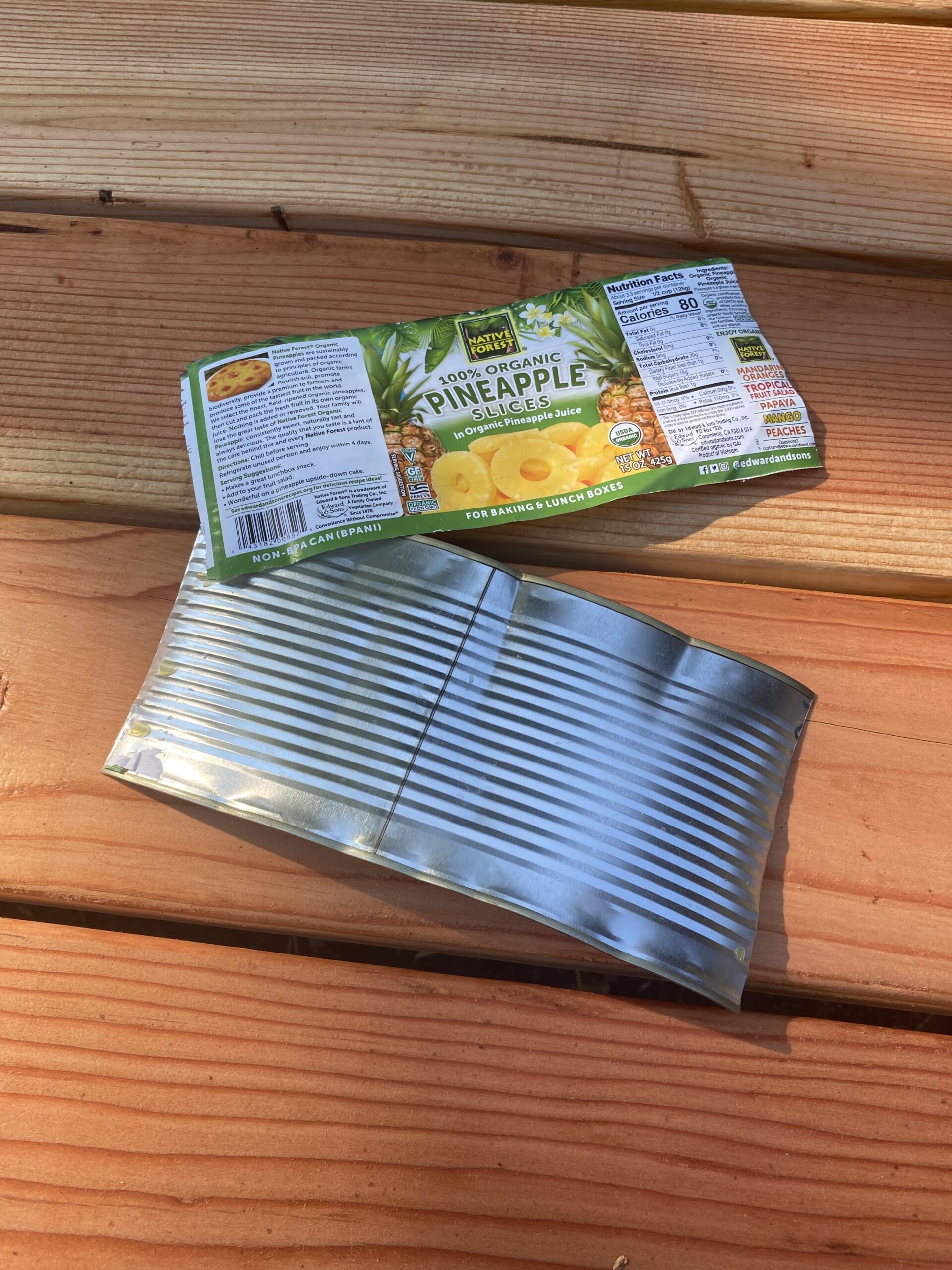
 October 14, 2022 – Friday
October 14, 2022 – Friday
What’s a tin can made of these days anyway?
While I can’t know for sure what sort of information or potential significance you or your doctor might glean from the XRF test results for the “tin” can pictured (full results set are below – including margin of error for each metal found AND a list of the metals that were not found), perhaps you may find these test results helpful if you regularly consume canned food and also have some unexplained metals in your system (typically detected using urine, hair, or blood testing).
Of course it is common knowledge that antique and vintage tin cans were historically sealed with Lead [even until fairly recently — and possibly still today in some countries), but this is no longer a practice in the canning industry in the United States. Here is an example of a baby formula can (an antique) that was sealed with Lead. However, I do understand that even with some modern canned food there is a known concern for the canning (the packaging) to impart toxicants into the food contained within, especially if the food is acidic and if it is stored in the can for a very long time.
Note: This article is only focused on the metals found when testing the food surface of this particular can, not the presence or absence of plastics or other contaminants that may or may not be used in the lining of this or other metal cans. This brand specifically advertises (on the front of the can) that their cans are “Non-BPA”, but I do understand from reading the work of other environmental activists who focus specifically on BPA and other plastics that in many cases, that type of disclaimer can mean that the BPA may have been replaced with another type of plastic coating — one which might turn out to have some potential health impact of it’s own, but just be not-yet-as-well-studied as BPA (e.g. BPS), and thus not (yet) raising the level of concern that BPA has garnerned (given BPA’s potential endocrine-disrupting properties). This particular can from this particular brand does not appear to have any sort of plastic coating on the interior of the can, instead appearing to just have the obvious metal plating seen in the photo.
As a family, we do periodically eat food sold in cans [normally only organic food – with few exceptions] — as a parent of disabled children, this is a matter of expediency and convenience. Also, at the start of the pandemic, we chose to buy some of our preferred canned foods by the case [and order them over the Internet, direct-delivered to our door], in an effort to limit our interaction with people in crowded grocery stores (it’s a matter of choosing which risk you have greater concerns for, given what was/is going on in the world!) That said, here’s a quick summary of the metals found in this “Non-BPA” tin can (the one pictured above, which held acidic fruit and fruit juice):
My thoughts on this are as follows:
If you regularly eat any canned food (olives? pineapple? tomato sauce?) sold in cans whose interiors look like this one’s, and IF you test positive for any of the metals listed here (in tests done using your blood, hair or urine) at levels that your doctor considers harmful (or even just “concerning”), as an experiment, you might want to consider no longer consuming any food from cans [look for glass jar packaging instead (and focus on eating fresh food whenever possible).]
Of the metals listed (the metals this particular can tested positive for), the one I found most concerning (especially given this was a can containing acidic fruit) is the Cobalt – not just because of the mere presence of Cobalt in the can, but because of the relatively high level of Cobalt (in light of the known concern for Cobalt toxicity / Cobalt-poisoning). Here’s a link to the Wikipedia article on Cobalt-poisoning if you want to start a deep dive into that subject…
Full XRF Test Results for the Pineapple Can Pictured
60-second reading
Readings repeated multiple times (on several areas of the can’s interior) to confirm the results
All test results on all components of the can’s interior (including seam and rolled edges) tested similarly
- Lead (Pb): non-detect
- Cadmium (Cd): non-detect
- Tin (Sn): 18,900 +/- 1,600 ppm
- Mercury (Hg): non-detect
- Selenium (Se): non-detect
- Barium (Ba): 372 +/- 146 ppm
- Arsenic (As): non-detect
- Chromium (Cr): 216 +/- 142 ppm
- Antimony (Sb): non-detect
- Copper (Cu): 370 +/- 146 ppm
- Manganese (Mn): 1,956 +/- 307 ppm
- Titanium (Ti): 896 +/- 442 ppm
- Zinc (Zn): non-detect
- Bromine (Br): non-detect
- Bismuth (Bi): non-detect
- Zirconium (Zr): non-detect
- Niobium (Nb): non-detect
- Iron (Fe): 780,500 +/- 39,000 ppm
- Cobalt (Co): 5,080 +/- 922 ppm
- Platinum (Pt): non-detect
- No other metals detected in consumer goods mode.
For those new to this website
Tamara Rubin is a Federal-award-winning independent advocate for consumer goods safety and a documentary filmmaker. She is also a mother of Lead-poisoned children. Tamara’s sons were acutely Lead-poisoned in August of 2005. She began testing consumer goods for toxicants in 2009 and was the parent-advocate responsible for finding Lead in the popular fidget spinner toys in 2017. Her work was also responsible for two CPSC product recalls in the summer of 2022, the Jumping Jumperoo recall (June 2022) and the Lead painted NUK baby bottle recall (July 2022) and was featured in an NPR story about Lead in consumer goods in August of 2022. Tamara uses XRF testing (a scientific method used by the U.S. Consumer Product Safety Commission) to test consumer goods for toxicants (specifically heavy metals), including Lead, Cadmium, Mercury, Antimony, and Arsenic. All test results reported on this website are science-based, accurate, and replicable. Items are tested multiple times, to confirm the test results for each component tested and reported on. Please click through to this link to learn more about the testing methodology used for the test results discussed and reported on this website.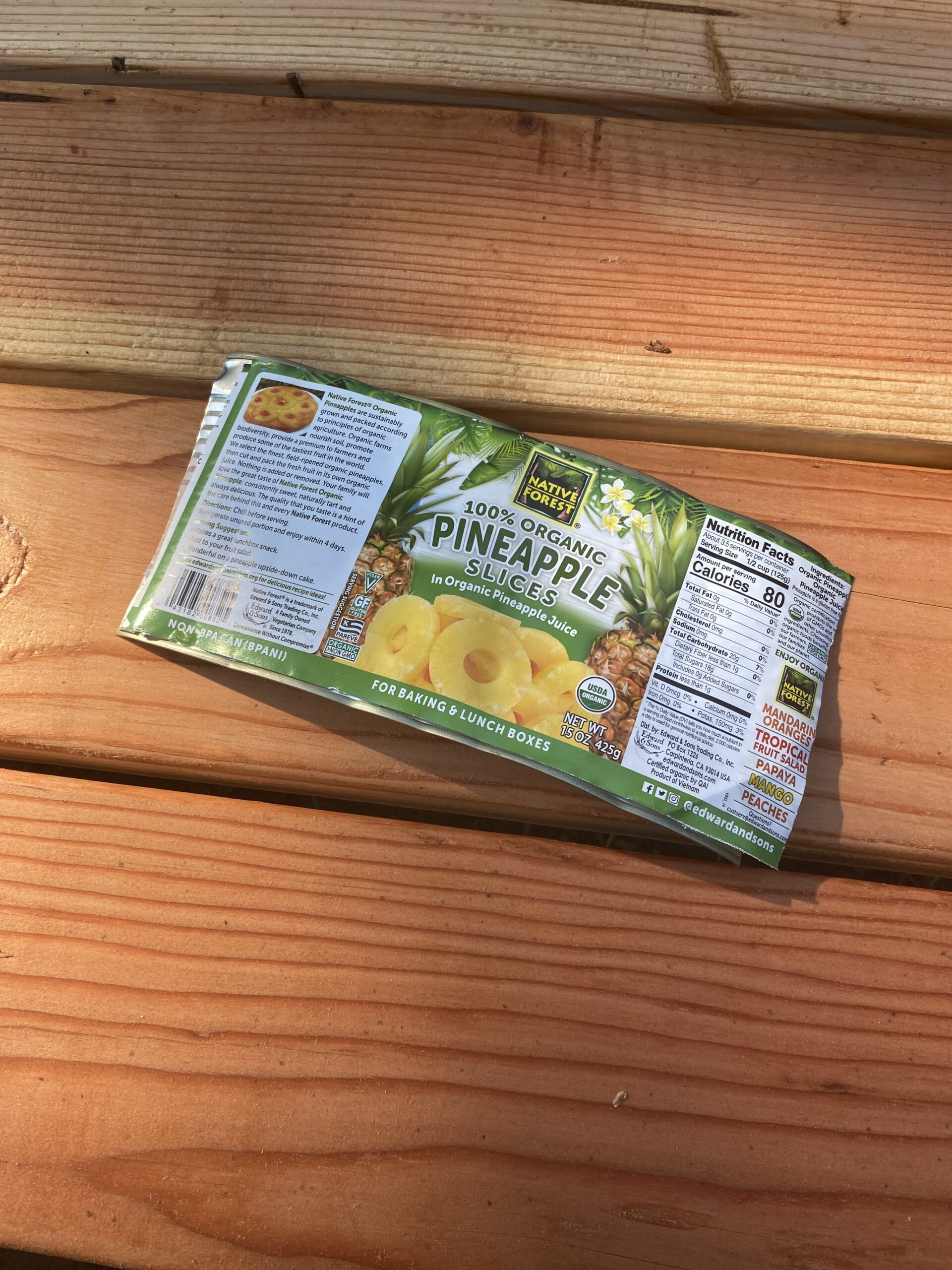
Never Miss an Important Article Again!
Join our Email List


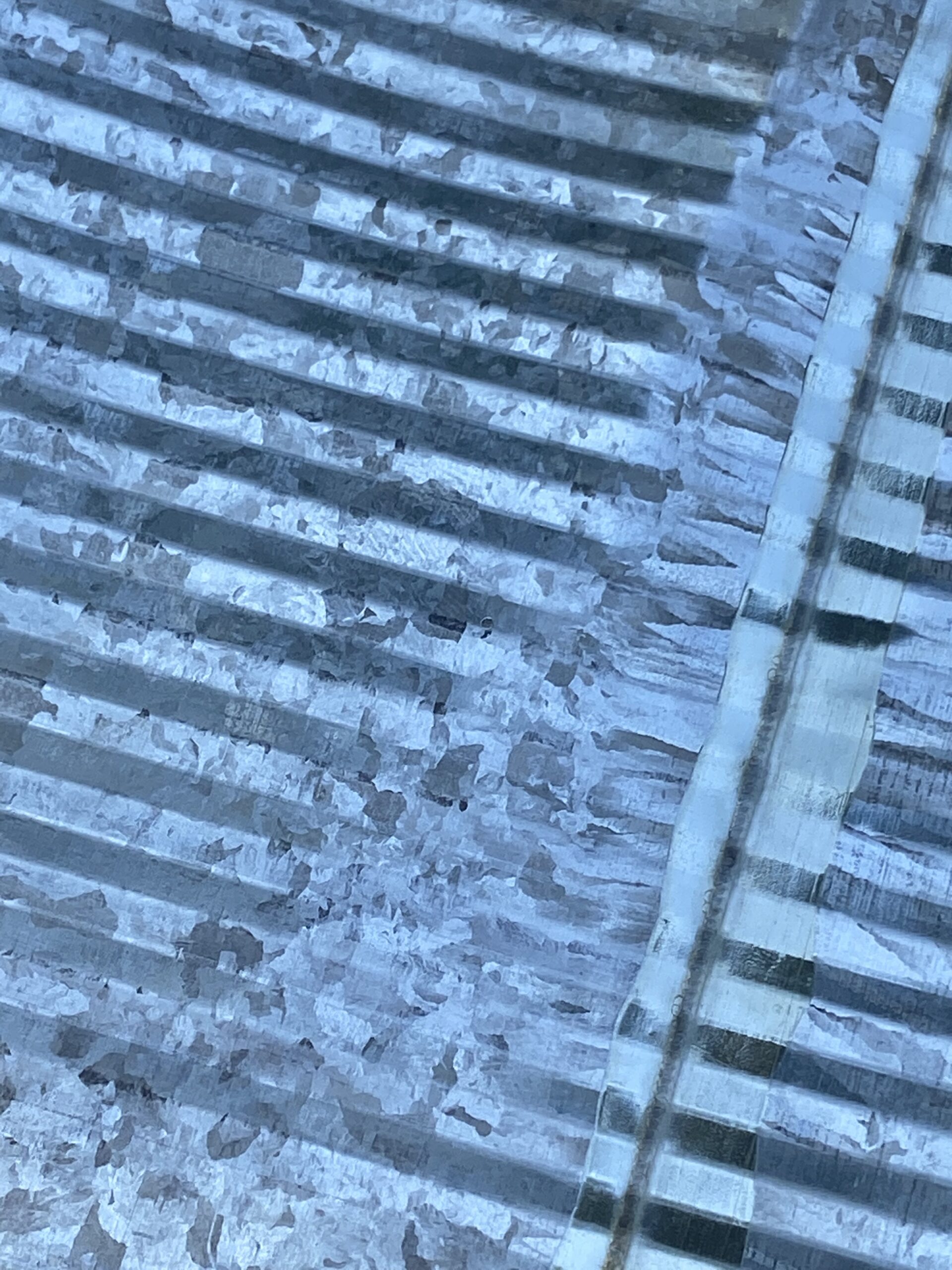
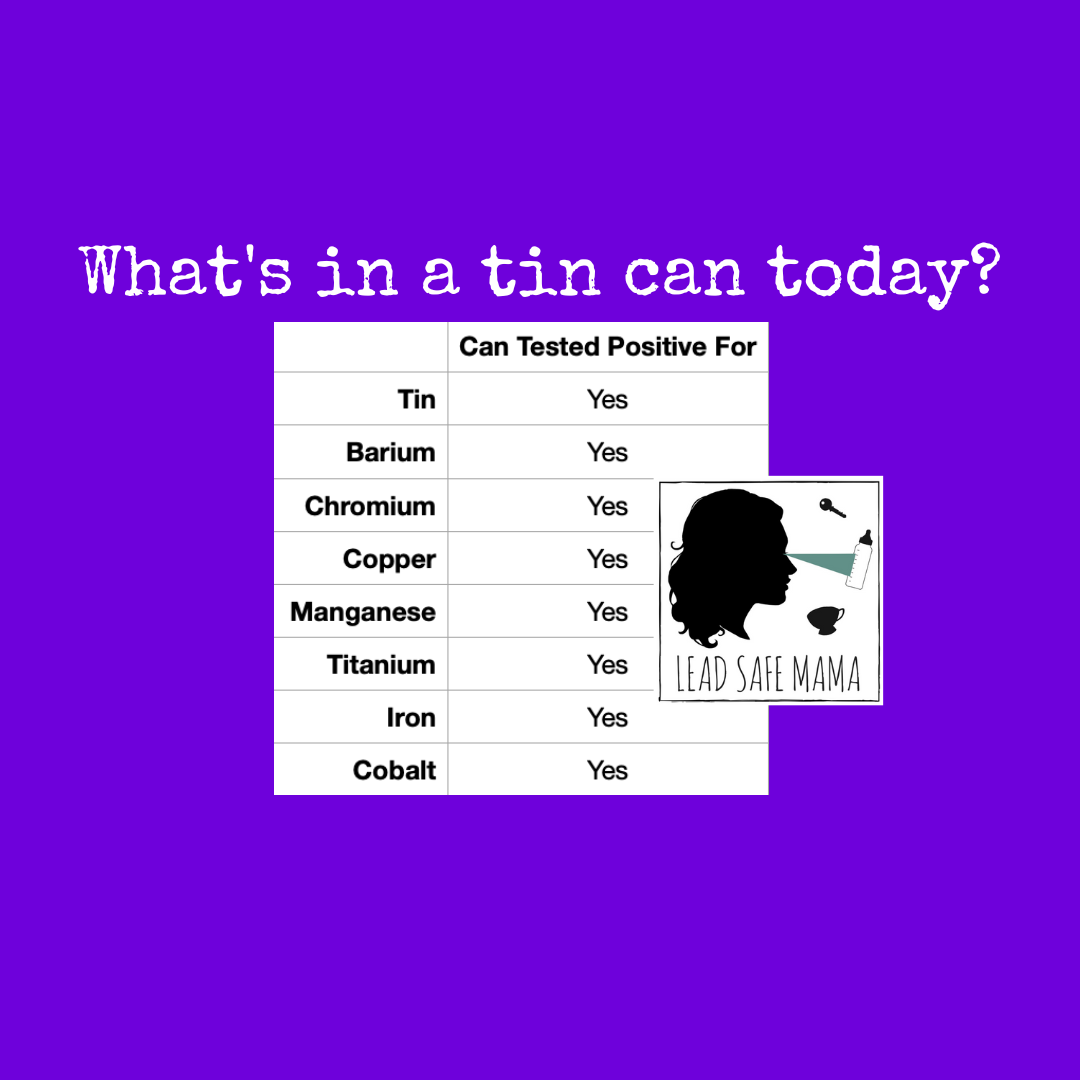
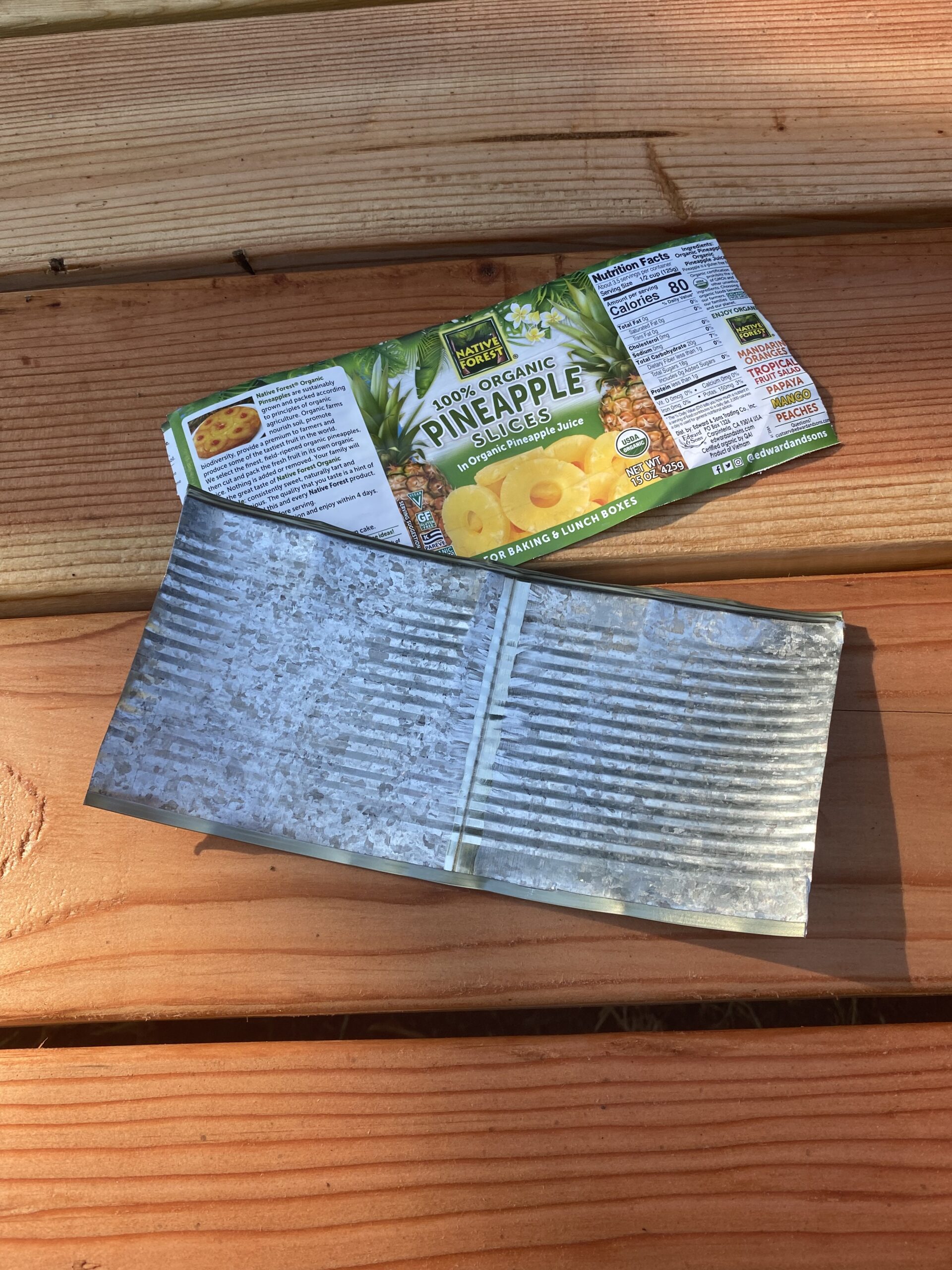

I can see that iron and manganese are present. I don’t know if those numbers are high? since I have a problem with too much iron and maganese in hair test, I would be interested to know if these numbers are high? Are they high enough to be the source of too much iron and manganese in hair test? I used to eat different kinds of organic beans that I put in salads, they were in cans like this. I have not been using cans for many months now, but when I had those tests done, I was taking cans regularly, so could it be a cause?
oh bummer, I ate this one.
These cans are lined in plastic. The metal doesn’t come into contact with the food.
We attempted to scrape and burn anything off of the interior to determine if there was any plastic lining and nothing came off.
T
So helpful. Thank you for all that you do.
the inner might be galvanized=with zinc oxide
Thank you for your work Tamara!
Is the safest way to buy baby food in jars?
Here are my thought on baby food:
https://tamararubin.com/2021/02/the-heavy-metals-in-baby-food-conversation-simplified-what-parents-need-to-know/